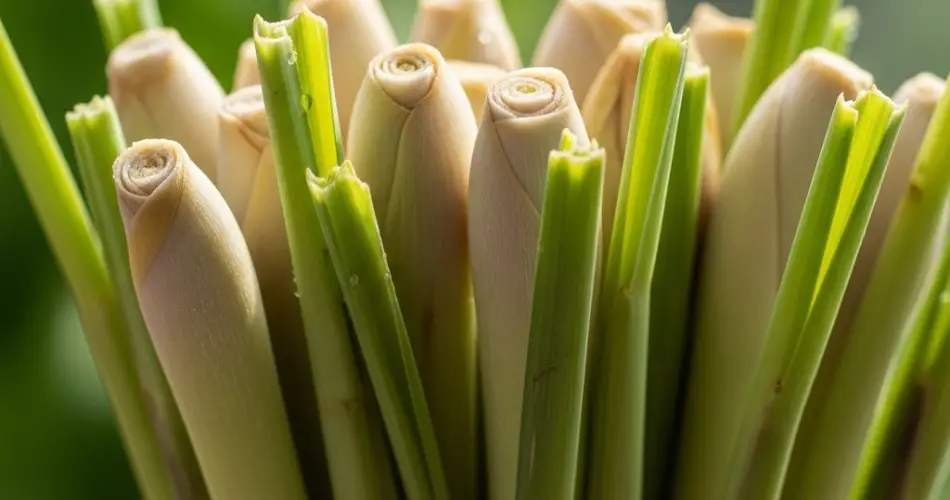Lemongrass is a versatile, aromatic herb popular in Asian cuisine and valued for its essential oils. It thrives in warm, tropical regions, making it a perfect plant for humid climates. However, even in these favorable conditions, proper care is essential to encourage healthy growth and abundant harvests. If you’re growing lemongrass in a humid environment, here’s a detailed guide to help your plants flourish.
Choose the Right Location
Even though lemongrass loves humidity, it still needs ample sunlight. Pick a location in your garden that receives at least 6 to 8 hours of direct sunlight daily. In extremely humid climates, airflow is just as important. Poor ventilation can lead to fungal issues, so avoid planting lemongrass in crowded corners or where air circulation is restricted.
If you’re planting in containers, opt for pots that you can move around. This gives you flexibility in adjusting the plant’s position if certain areas get too shaded or lack adequate airflow during the rainy season.
Soil Preparation
Lemongrass prefers well-draining, fertile soil. Heavy clay soils that retain too much water can lead to root rot, especially in humid conditions. Amend your garden soil with compost or organic matter to improve texture and drainage. You can also mix in a bit of sand or perlite to enhance drainage further.
Aim for a slightly acidic to neutral pH, around 6.0 to 7.0. Test your soil if needed and make adjustments before planting.
Planting Tips
Lemongrass can be started from seeds, cuttings, or stalks bought from the market. If you’re using fresh stalks, make sure they still have their root base intact. Place the stalks in a glass of water until roots appear, then transplant them into your prepared soil or pot.
Space plants about 24 inches (60 cm) apart to ensure they have room to grow. This spacing helps with air circulation, reducing the risk of fungal infections in humid environments.
Watering Wisely
Although lemongrass appreciates moisture, it does not tolerate soggy soil. In humid climates, the air already holds a lot of moisture, so it’s easy to overwater without realizing it. Check the soil before watering—only water when the top inch feels dry.
Use mulch around the base of the plant to retain soil moisture and suppress weeds, but avoid piling mulch directly against the stalks, as this can encourage rot.
Fertilizing for Vigorous Growth
Lemongrass is a fast-growing herb and benefits from regular feeding. Use a balanced, organic fertilizer once a month during the growing season. If you’re using compost or worm castings, apply it around the base of the plant and gently mix it into the topsoil.
For container-grown lemongrass, feed a little more often, as nutrients wash out more quickly from pots. A diluted liquid fertilizer every two weeks works well for potted plants.
Controlling Pests and Disease
Humid climates can invite fungal diseases like rust, mildew, and leaf spots. To prevent these, ensure your plants have enough space and air circulation. Water early in the morning so the foliage dries quickly throughout the day.
If you notice any diseased leaves, remove them promptly. Neem oil or homemade garlic spray can help manage mild fungal or insect problems. Common pests include aphids and spider mites, which can be washed off with a strong spray of water or treated with insecticidal soap.
Pruning and Maintenance
Regular pruning not only keeps the plant tidy but also promotes new growth. Trim dead or yellowing leaves and cut back overgrown stalks. You can harvest outer stalks as needed, leaving the inner ones to continue growing.
If the clump becomes too dense, divide the plant every year or two. This not only rejuvenates the plant but also gives you new starts for expanding your garden or sharing with friends.
Harvesting Lemongrass
Harvest lemongrass stalks when they are at least half an inch thick and firm at the base. Cut close to the ground, taking care not to disturb nearby shoots. The leaves can also be used to make tea or infused in broths for extra flavor.
Regular harvesting encourages the plant to produce more stalks, especially when done during the active growing season.
Overwintering Tips (If Needed)
In tropical humid regions, lemongrass can grow year-round. However, if your area experiences a cooler season, consider moving potted plants indoors or to a sheltered area. Cut back the leaves to reduce stress and reduce watering during dormancy.
Final Thoughts
Lemongrass is a resilient herb that loves warmth and moisture but still requires thoughtful care in humid climates. The key lies in balancing water needs with proper drainage, ensuring airflow, and maintaining healthy soil. With consistent attention, lemongrass will reward you with fragrant leaves and flavorful stalks perfect for culinary and herbal uses all year long.



